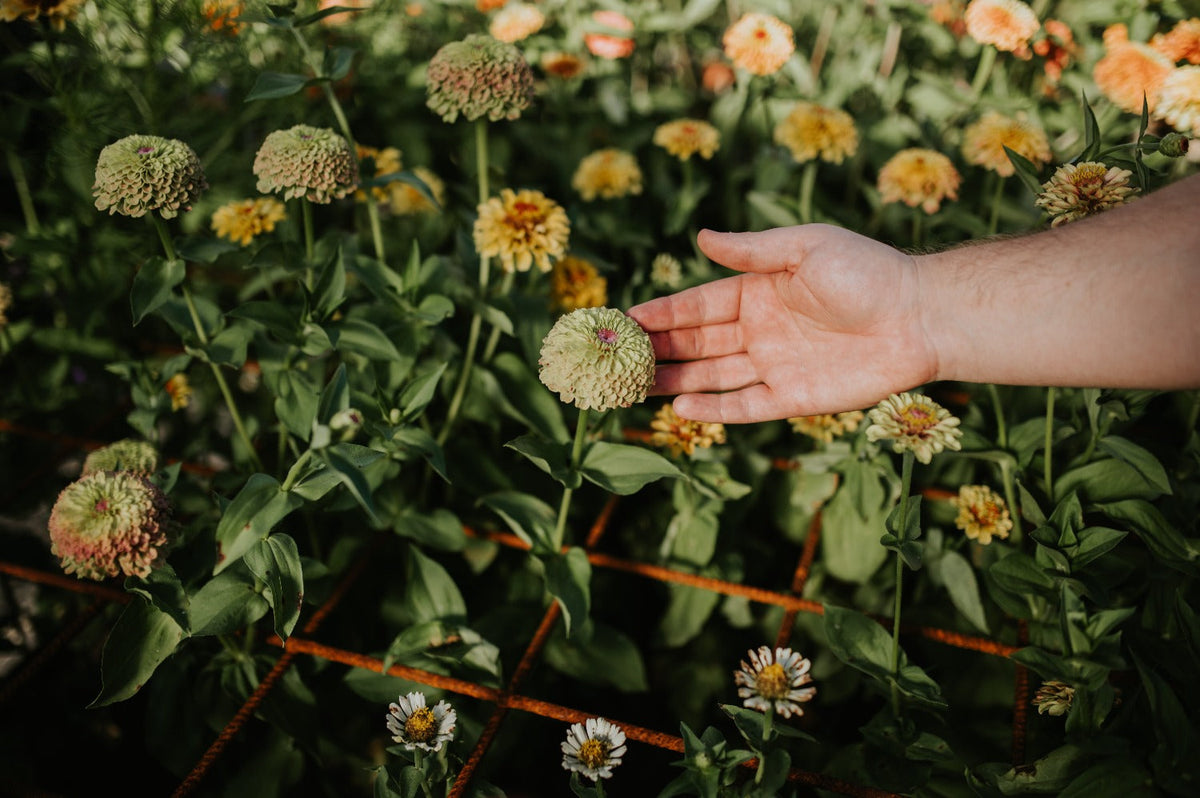
Help, my plants are falling over! Here's how to support flowers
|
Tijd nodig om dit artikel te lezen: 2 min
|
Tijd nodig om dit artikel te lezen: 2 min
Many cut flowers such as dahlias, cosmos, zinnias and snapdragons grow fast when they are happy. But how do you make sure that your plants do not fall to the ground after a gust of wind or heavy summer shower? By supporting them! Annual cut flowers tend to grow very quickly and that often results in large plants, which are subject to the elements of Mother Nature. It is up to us, enthusiastic gardeners, to give them a helping hand. So support. Happy flowers, happy us.
Dahlias are so versatile that they come in many shapes. Large, small, medium-sized, large flowers and small flowers: you name it , and there is a variety that suits you. Small varieties usually have sturdy flower stems, remain low and therefore do not need extra support to grow. The medium-high and high varieties, that is a different story. Often we are talking about plants that grow 80 to 120 and 140 centimeters high. Combine that with many and heavy flowers, and your plants will soon fall to the ground after a wind or rain shower . Supporting your plants is therefore important, because although dahlias have fairly sturdy stems, they do catch a lot of wind. And they may just be your favorite flowers.
You can literally support your plants with anything, but what we prefer not to see in the garden is unnecessary plastic use . There are nets that are flexible and do the job just fine, but are made of plastic. A waste, we think, so we come up with an alternative to support your plants: concrete mesh that you place on wooden posts. For dahlias, they are at a height of about 65 to 70 centimetres, for other cut flowers usually at 40 to 50 centimetres. Your plants grow neatly between the openings and are supported by the mesh . The rusty colour that you get over time blends in well with the garden, and within a few weeks you won't see it anymore, because the plants grow through it and everything is covered with flowers. Handy, right?
Did you know that we also have a well-stocked YouTube channel? With over 450 videos, we have a large database of information. Be sure to check out YouTube and subscribe, so you can stay up to date with the latest videos.
In this video Angelo shows you how he goes about supporting flowers in the garden.
In the border, support is a different story, because the plants are surrounded by other plants. Setting up a whole construction like with cut flowers is difficult, but you can support plants like dahlias with a bamboo stick or with pruning wood from the garden. Stick it in the ground next to the plant (in the case of dahlias, make sure you don't pierce the tuber), secure it now and then with a string and you're done. Also keep in mind that annuals find support with perennials in the border. So you don't always need something to support them . Although an extra is a nice bonus in this case.
Sometimes we don't have to look too far. That's true in life, but certainly when you're gardening. A portion of common sense and you'll get a long way. That's also the case with supporting your plants. Often it's enough to hammer some stakes or pruning wood into the ground and use a rope to support your plants. No complicated constructions, just rope and a few stakes . With cut flowers you can attach some rope in the middle like a spider web, so that the stems are kept straight and don't just fall over. This can even be applied to a bed of dahlias.


